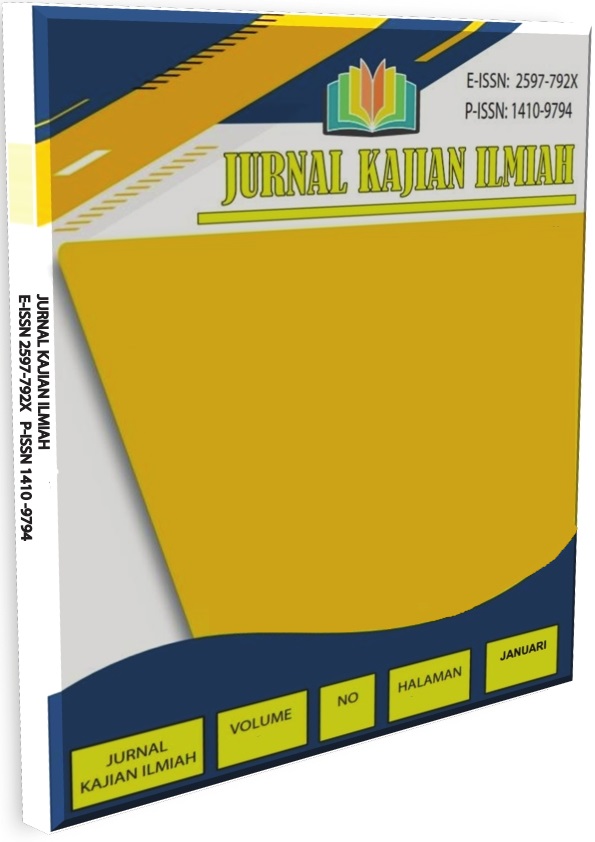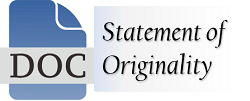Empowering Leadership Dalam Peningkatan Kreativitas Karyawan
DOI:
https://doi.org/10.31599/ds0d2t66Keywords:
Creative Self-Efficacy, Employee Creativity, Empowerment LeadershipAbstract
The purpose of this study is to examine empowerment leadership and its dimensions, namely the dimensions of leading by example, coaching, participative decision making, informing and show concern and also include creative self-efficacy variables in influencing employee creativity. The study took the population of employees at three companies in the field of financial services located in Jakarta. The sample measurement technique uses the Slovin formula. From this calculation, a sample size of 159 employees was obtained. Intake of 159 samples taken by simple random sampling technique. The data analysis technique used to test the hypothesis was using multiple regression with SPSS 26. The results showed that increasing the practice of empowering leadership and creative self-efficacy of employees will increase employee creativity. The results of the influence of the five dimensions of empowerment leadership on employee creativity, only the leading by example dimension is proven to affect employee creativity. While the other four dimensions have no significant effect. The practical implication is that companies are expected to apply leadership that empowers employees and create programs to increase employee creative self-efficacy in an effort to increase employee creativity.
Downloads
References
Agustina, T., & Pradana, A. (2021, January 31). Empowering Leadership dalam Membentuk Employee Creativity. Jurnal Bisnis Dan Manajemen, 17(1), 13-26. https://doi.org/https://doi.org/10.23960/jbm.v17i1.182
Ahearne, M., Mathieu, J., & Rapp, A. (2005). To Empower or Not to Empower Your Sales Force? An Empirical Examination of the Influence of Leadership Empowerment Behavior on Customer Satisfaction and Performance. Journal of Applied Psychology, 90(5), 945–955. https://doi.org/10.1037/0021-9010.90.5.945
Alfaris, B., & Zakiy, M. (2021). Affective Commitment As A Mediation Variables Effect Of Empowering Leadership On Employee Creativity. JEBIS (Jurnal Ekonomi dan Bisnis Islam) | JOURNAL OF ISLAMIC ECONOMICS AND BUSINESS, 7(2), 250 – 266. doi:http://dx.doi.org/10.20473/jebis.v7i2.26685
Amundsen, S., & Martinsen, Ø. L. (2015). Linking Empowering Leadership to Job Satisfaction, Work Effort, and Creativity: The Role of Self-Leadership and Psychological Empowerment. Journal of Leadership & Organizational Studies, 22(3), 304–323. https://doi.org/10.1177/1548051814565819
Arnold, J.A., Arad, S., Rhoades, J.A., & Drasgow, F. (2000). The empowering leadership questionnaire: the construction and validation of a new scale for measuring leader behaviors. Journal of Organizational Behavior, 21(3). https://doi.org/10.1002/(SICI)1099-1379(200005)21:3<249::AID-JOB10>3.0.CO;2-%23
Arshad, M., Yu, C.K., Qadir, A., Ahmad, W., & Xie, C. (2021) The moderating role of knowledge sharing and mediating role of employee creative self-efficacy on the association of empowering leadership and employee creativity. International Journal of Management PracticeVol, 14(6). Retrieved from https://www.inderscienceonline.com/doi/abs/10.1504/IJMP.2021.118940
Azliyanti, E., Jadmiko, P., & Utami, W. (2019). Peran Pemediasi Efikasi Diri Kreatif Pada Hubungan Antara Persepsi Terhadap Kepemimpinan Transformasional Pada Kreativitas Karyawan. Relevance: Journal of Management and Business, 2(2). doi:https://doi.org/10.22515/relevance.v2i2.1913
Fitriani, Y., & Wulansari, N. (2018). Impact of Empowering Leadership on Employee Creativity by Motivation to Learn and Trust in Leader as a Mediation. Management Analysis Journal, 7(2), 244-253. https://doi.org/10.15294/maj.v7i2.25141
Haase, J., Hoff, E.V., Hanel, P.H.P & Innes-Ker, A. (2018). A MetaAnalysis of the Relation between Creative Self-Efficacy and Different Creativity Measurements, Creativity Research Journal, 30(1), 1-16, 10.1080/10400419.2018.1411436
Hughes, D.J.,Lee, A., Tian, A.w., Newman, A., & Legood, A. (2018). Leadership, creativity, and innovation: A critical review and practical recommendations,The Leadership Quarterly, 29(5), 549-569.https://doi.org/10.1016/j.leaqua.2018.03.001.
Kempa, S., & Eric, S. (2020). Creative Performance: Dampak Work Environment Dan Creative Self-Efficacy (Studi Kasus di PT. Putra Mojo Maju Jaya Abadi. JRMSI - Jurnal Riset Manajemen Sains Indonesia, 11(2), 282-299. https://doi.org/10.21009/JRMSI.011.2.05
Luthans, F. (2011). Organizational behavior an evidence based approach (12 ed.). new york, usa: McGrawwHill Companies, Inc.
Martono, S., Wulansari, N.A., & Khoiruddin, M. (2020). IOP Conf. Series: Earth and Environmental Science 485. 10.1088/1755-1315/485/1/012060
Nuzul, A. (2018). Hubungan Antara Empowering Leadership, Creative Self Efficacy Dan Employee Creativity Serta Dampaknya Terhadap Kinerja Karyawan. Jurnal Ilmu Manajemen, 6(2). Retrieved from https://core.ac.uk/download/pdf/230763739.pdf
Sari, S. R. (2017). Organizational Ambidexterity: Ketanggguhan yang dibutuhkan untuk keberlangsungan kinerja organisasi masa depan. Jurnal Riset Manajemen dan Bisni (JRMB) , 2 (3), 433-438.
Sultika, B., & Hartijasti, Y. (2017). Faktor-Faktor Yang Memengaruhi Kreativitas Dan Orientasi Inovasi Di Tempat Bekerja (Studi Kasus Di Perum Bulog). Jurnal Riset Bisnis dan Manajemen Tirtayasa, 1(2). http://dx.doi.org/10.48181/jrbmt.v1i2.3036
Thawil, S. M., & Sari, S. R. (2018). Kesuksesan Implementasi Inovasi Oganisasi. Jurnal Riset Manajemen dan Bisnis (JRMB) Fakultas Ekonomi UNIAT , 3 (2), 175-182.
Zhang, S., Ke, X., Wang, X-H.F., & Liu, J. (2018). Empowering leadership and employee creativity: A dual-mechanism perspective. Journal of Occupational and Organizational Psychology, 91(4), 896-917. https://doi.org/10.1111/joop.12219











_-_Copy1.jpg)




